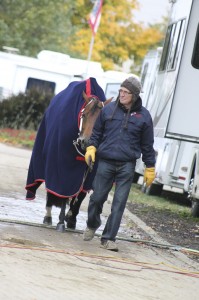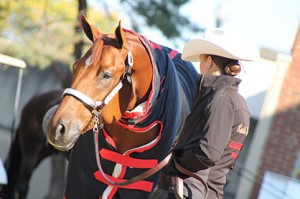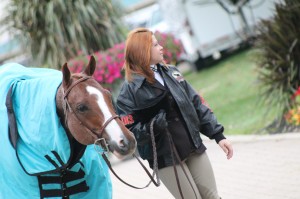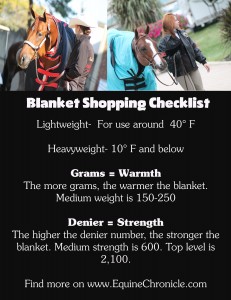It’s Blanket Season! Here’s What You NEED to Know Before Going Shopping
By: Megan Arszman
The temperatures are starting to drop, and the nights are getting longer. Timer lights are being put into full use for some, and it’s time to do a little blanket shopping to keep your equine friend warm this winter. Here is a quick rundown to prepare you for blanket shopping:
Do You Really Need to Blanket?
This is the first question you should ask yourself when it comes to choosing a blanket for your horse. If you’re not trying to keep a short show coat throughout the winter, and you’re planning to turn your horse out for a few months, experts suggest it’s best to let Mother Nature handle the insulation. Blanketing your horse can flatten his coat, which causes it to lose its ability to insulate. As long as your horse has shelter from the wind and proper nutrition, they should be fine throughout the winter without a blanket. However, if the temperature dips below 10° Fahrenheit, you might want to have a blanket on hand to help with extreme chill.

A thin, breathable cooler is a great wind and rain barrier when venturing outdoors at a show like the Quarter Horse Congress. EquineChronicle.com Photo
What Type of Blanket Works Best?
There are three basic types of blankets you’ll encounter on your shopping excursion, and they aren’t created the same.
Turnout Blanket – Turnout blankets are designed to be waterproof and are made for use during turnout. Be sure your turnout blanket is waterproof, but breathable, so the blanket doesn’t become saturated in the snow and elements. You will find lightweight, medium weight, and heavyweight turnout blankets, so know your region’s temperature range before you buy.
Stable Blanket – This type of blanket is for use when your horse is staying inside the barn, because they are not waterproof.
Sheet—Sheets are considered to be multi-purpose. While you mostly see them being used to keep horses clean and sleek in the warm-up pen, you can also use them for lightweight coverage.
Show Cooler—A thin, breathable cooler is a great wind and rain barrier when venturing outdoors at shows like the Quarter Horse Congress. A lightweight cooler will help to protect your show tack from the elements and keeps your horse’s hair coat slick and shiny on the way to the show pen. With quick removal Velcro straps or clips, some are made out of polar fleece or wool, while others are water resistant with nylon or insulated sateen. Schneiders provides a variety of great options to fit all your needs.
Degree Differences
Lightweight blankets are meant for use around 40° Fahrenheit, while around 10° and below require heavyweight blankets.
You’ll see many blankets described with grams for filling. The more grams (i.e., 400), the warmer the blanket, with a medium weight blanket being between 150-250. The term denier describes the strength of the blanket, so if you have a horse notorious for ripping his sheet or blankets, you want to have the highest denier number—2100. Medium strength blankets are 600.
Measuring for Blankets
Before you shop, make sure you know what size blanket you need. Have your horse stand square. Use a flexible measuring tape to measure along one side of your horse. Place the tape at the center point of your horse’s chest. Have your handler hold it in place (as well as the horse). Run the tape around the horse, keeping it in a straight line, until you get to the end of your horse’s hip. The length in inches is the size blanket you’ll need. Keep in mind, blankets are sold in even numbers, so round up if you hit an odd number.
When trying on the blanket, the end of the blanket should stop just before the top of the tail. You don’t want the ends to meet on the horse’s tail; that means it’s too big. Check for any potential rubbing across the horse’s withers, shoulders, and chest—it might be too tight. If the blanket drops low on the shoulder, it’s too big.
Most stores offer exchanges, as long as the blanket has only been tried on a clean horse and not worn, so be sure to know the return and exchange policies before you buy!
If you’d like to keep all of these helpful tips on hand during your shopping excursion (at the Congress we’d imagine) click on our Blanket Shopping Guide and print out the image or save it on your smartphone or iPad.













